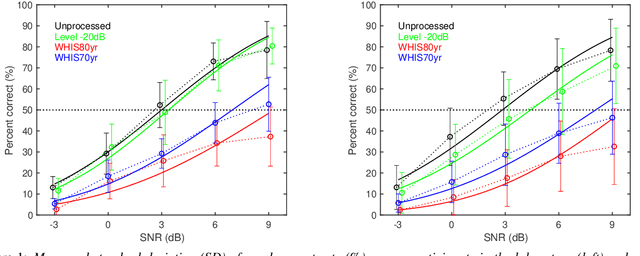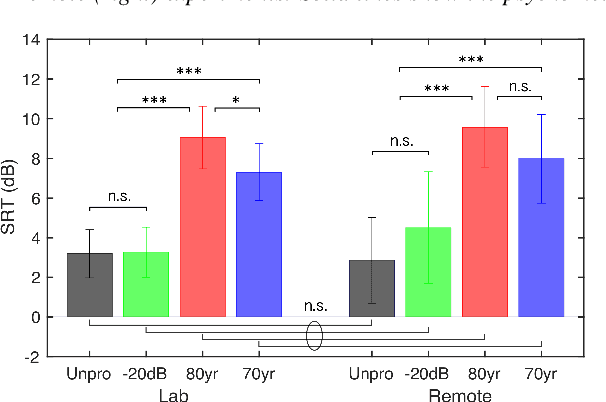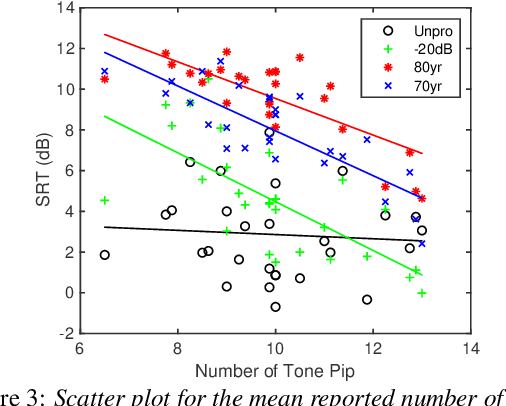Honoka Tamaru
GESI: Gammachirp Envelope Similarity Index for Predicting Intelligibility of Simulated Hearing Loss Sounds
Oct 23, 2023Abstract:We proposed a new objective intelligibility measure (OIM), called the Gammachirp Envelope Similarity Index (GESI), which can predict the speech intelligibility (SI) of simulated hearing loss (HL) sounds for normal hearing (NH) listeners. GESI is an intrusive method that computes the SI metric using the gammachirp filterbank (GCFB), the modulation filterbank, and the extended cosine similarity measure. GESI can accept the level asymmetry of the reference and test sounds and reflect the HI listener's hearing level as it appears on the audiogram. A unique feature of GESI is its ability to incorporate an individual participant's listening condition into the SI prediction. We conducted four SI experiments on male and female speech sounds in both laboratory and crowdsourced remote environments. We then evaluated GESI and the conventional OIMs, STOI, ESTOI, MBSTOI, and HASPI, for their ability to predict mean and individual SI values with and without the use of simulated HL sounds. GESI outperformed the other OIMs in all evaluations. STOI, ESTOI, and MBSTOI did not predict SI at all, even when using the simulated HL sounds. HASPI did not predict the difference between the laboratory and remote experiments on male speech sounds and the individual SI values. GESI may provide a first step toward SI prediction for individual HI listeners whose HL is caused solely by peripheral dysfunction.
Speech intelligibility of simulated hearing loss sounds and its prediction using the Gammachirp Envelope Similarity Index (GESI)
Jun 14, 2022



Abstract:In the present study, speech intelligibility (SI) experiments were performed using simulated hearing loss (HL) sounds in laboratory and remote environments to clarify the effects of peripheral dysfunction. Noisy speech sounds were processed to simulate the average HL of 70- and 80-year-olds using Wadai Hearing Impairment Simulator (WHIS). These sounds were presented to normal hearing (NH) listeners whose cognitive function could be assumed to be normal. The results showed that the divergence was larger in the remote experiments than in the laboratory ones. However, the remote results could be equalized to the laboratory ones, mostly through data screening using the results of tone pip tests prepared on the experimental web page. In addition, a newly proposed objective intelligibility measure (OIM) called the Gammachirp Envelope Similarity Index (GESI) explained the psychometric functions in the laboratory and remote experiments fairly well. GESI has the potential to explain the SI of HI listeners by properly setting HL parameters.
 Add to Chrome
Add to Chrome Add to Firefox
Add to Firefox Add to Edge
Add to Edge